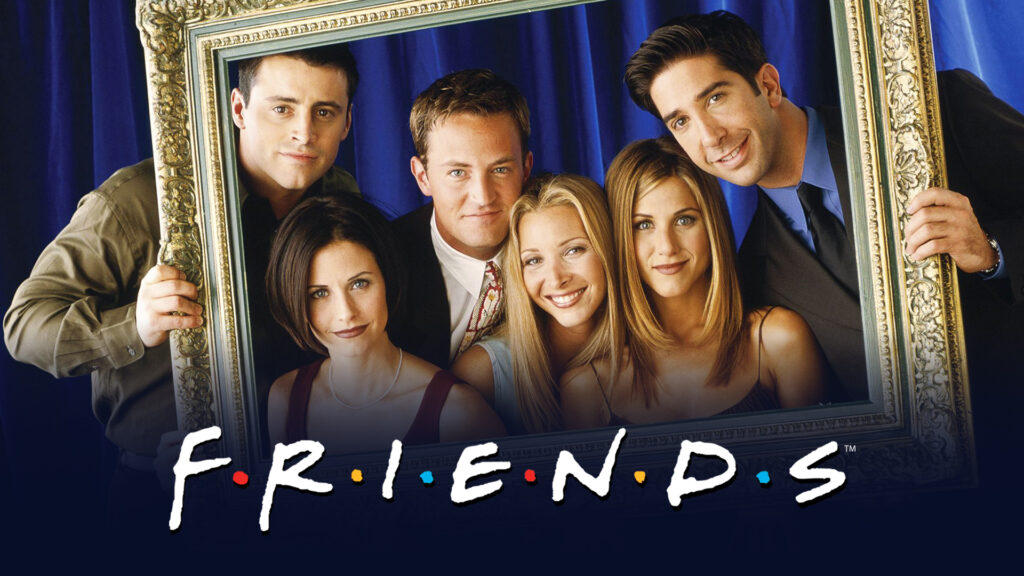As we mourn the premature passing of Matthew Perry, it seems a good time to reflect on what made him such a comedic genius in Friends – the audience – and what we lost (and also gained) when we transitioned away from studio audiences to the single-camera style we are all familiar with today.
In the world of television, change is inevitable, and sitcoms are no exception. Over the years, we’ve witnessed a transformation in the way sitcoms are produced. In this blog post, we’ll explore the evolution of sitcom production, focusing on the shift away from live studio audiences and how it has impacted the comedic value of these beloved shows.
The Transition Away from Live Studio Audiences
The traditional sitcom format, which involved filming in front of a live studio audience, was the standard for decades. This approach brought an undeniable energy to the shows, with the laughter and reactions of the audience becoming an integral part of the comedic experience. This interaction between the cast and the audience added a unique layer to the performances, often resulting in comedic timing that felt like a well-rehearsed stand-up routine.
However, around the turn of the 21st century, we began to see a shift in the sitcom landscape. Shows like The Office and Modern Family introduced a new format: single-camera, mockumentary-style filming. This style abandoned the live audience in favor of a more authentic, documentary-like feel.
The Gain in Authenticity
The move away from live studio audiences brought with it several advantages. First and foremost, it allowed for a more natural and authentic portrayal of the characters and their lives. The absence of a studio audience meant that scenes could be filmed without the need for punchlines or pauses for laughter, creating a more realistic and immersive experience for viewers. The mockumentary style gave the impression that we were peeking into the characters’ lives, almost like a voyeur.
Additionally, the freedom from the constraints of a studio audience allowed for more creative freedom in terms of camera work, set design, and editing. This opened the door to a wide range of innovative storytelling techniques that were not feasible in the traditional multi-camera format.
The Loss of Pure Comedic Value
While the transition to single-camera sitcoms brought about numerous benefits, today I want to acknowledge what was left behind. The absence of a live audience changed the dynamics of comedic performance. Gone were the days of characters delivering their lines to an expectant crowd, with the audience’s laughter serving as an immediate reward for well-timed jokes. The physicality and slapstick humor that often characterized traditional sitcoms took a backseat to subtler, character-driven comedy.
Consider the comedic brilliance of actors like Lucille Ball in I Love Lucy, Michael J. Fox in Spin City or Matthew Perry in Friends. These performers thrived in the presence of a live studio audience, using their impeccable timing and physicality to elicit uproarious laughter. The interaction with the audience created a unique synergy, with each joke building on the energy in the room. The sitcom was the stage, and context, for a unique comedic performance.
The Comedy Spectrum
In the end, the evolution of sitcoms underscores the significance of creative decision-making in television. It demonstrates how the choice between a live studio audience and a single-camera format is not just a technical decision but a pivotal creative one. These decisions are essential because they profoundly impact the overall vision of the show, the type of humour it can deliver, and the audience’s engagement.
Both approaches showcase the artistry of television production. The traditional format thrives on the immediate feedback and energy of a live audience, creating a dynamic and spontaneous atmosphere in the room. Single-camera sitcoms often rely on post-production editing to fine-tune comedic timing and storytelling. The editing process becomes an essential part of crafting the humor and narrative, where decisions are made to maximize comedic effect.
It’s fascinating to see how even within a genre, the sitcom, which can feel relatively traditional and safe, the television medium allows for versatility and creative choices that completely change the outcome for the TV audience.

